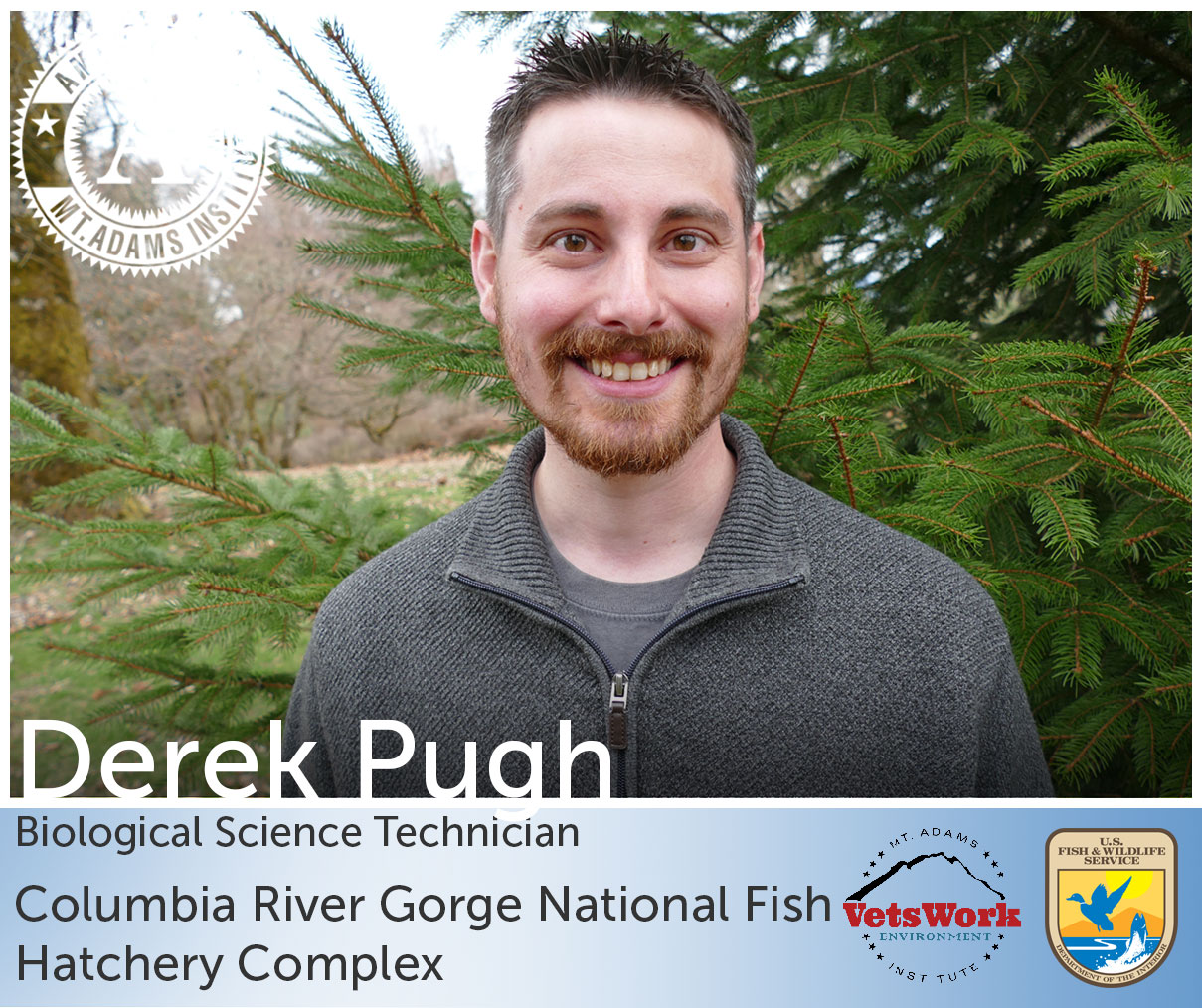 Since getting hired by the Mt. Adams Institute through the VetsWork AmeriCorps program in March, it has been an extremely busy time learning how fish hatcheries operate. I began my first day of work at the Carson National Fish Hatchery in Washington on March 25th, 2019. Since then, I’ve been exposed to how much work is involved at a hatchery verses what I thought previously. Hatchery work is physically taxing most of the year; there are busier times of the year than others, depending on what kinds of fish are being raised. For Carson, we release 1.42 million fish a year, and have double that amount for a majority of that time. From what I’ve been told so far, the winter and spring seasons are the absolute busiest.
Since getting hired by the Mt. Adams Institute through the VetsWork AmeriCorps program in March, it has been an extremely busy time learning how fish hatcheries operate. I began my first day of work at the Carson National Fish Hatchery in Washington on March 25th, 2019. Since then, I’ve been exposed to how much work is involved at a hatchery verses what I thought previously. Hatchery work is physically taxing most of the year; there are busier times of the year than others, depending on what kinds of fish are being raised. For Carson, we release 1.42 million fish a year, and have double that amount for a majority of that time. From what I’ve been told so far, the winter and spring seasons are the absolute busiest.
Within two weeks of working at the hatchery, I learned how to set up a massive pump that safely takes the fish out of their raceways, and pumps them up vertically to the top of water tanker trucks for transporting the fish to another location. In that case, approximately 250,000 fish were transported to Walla Walla. Once the fish arrive via hoses up to the tanker trucks, they are put into brackish water, which helps keep the fish calm. One of the biggest killers of fish is stress. After about 5 hours of crowding the fish down the raceways towards the pump, we successfully loaded up two tanker trucks.
Also, we recently released our smolts, fish that have been raised about 18 months at the hatchery, to the Wind River. We released a total close to 1.17 million. We’ll be lucky if only 1-2 percent return. That was a full day of pulling boards, monitoring water levels, and ensuring safe passage for those fish.
Just recently, we have had a marking crew on site to clip fins and insert a small wore tag into the nose of our remaining 1.42 million salmon. It’s been a great experience meeting the crew and learning the importance of the whole process.
I’m incredibly thankful for the opportunity the Mt. Adams Institute has provided via the VetsWork AmeriCorps umbrella, and I hope this story inspires others to look into giving back to our natural world.

